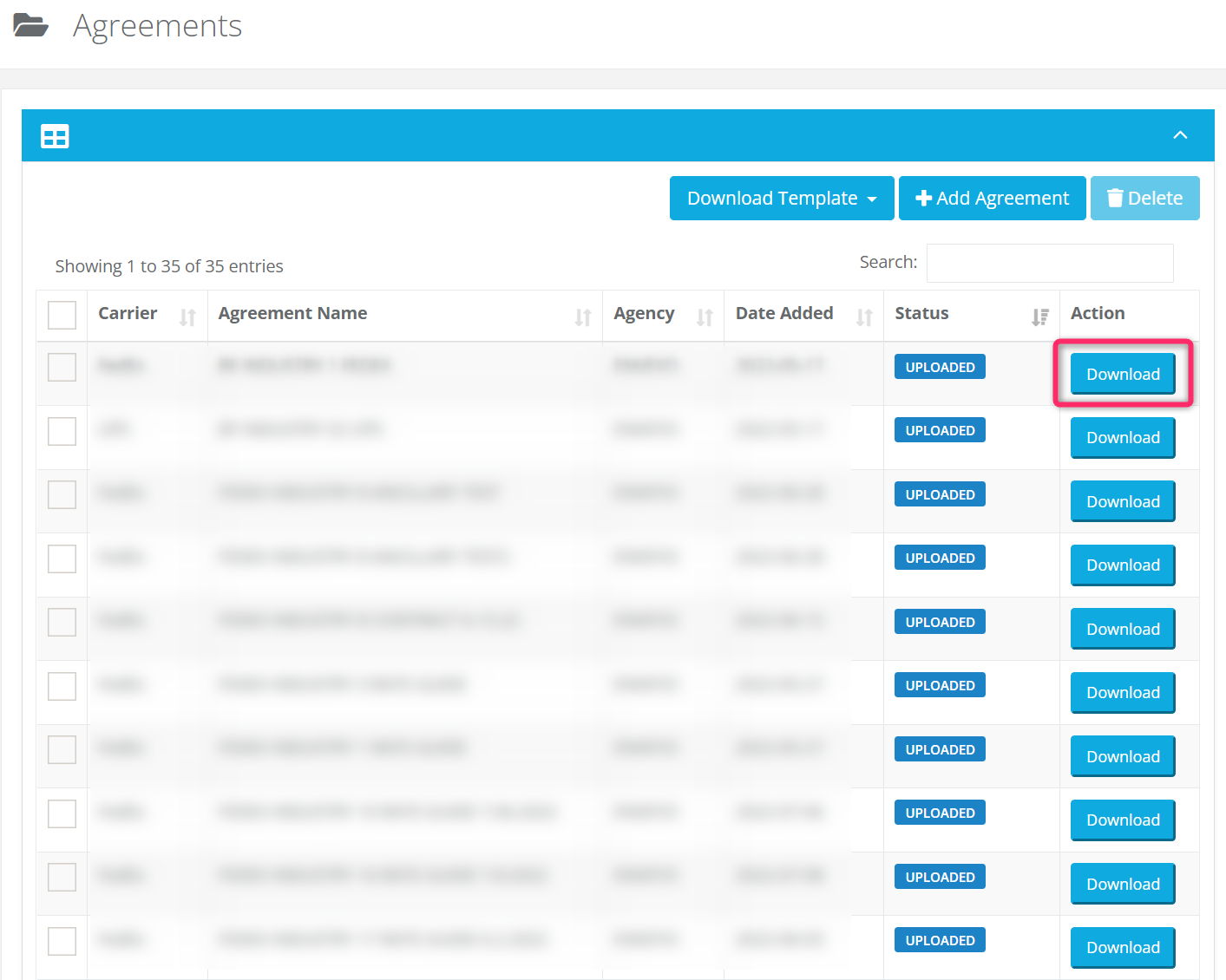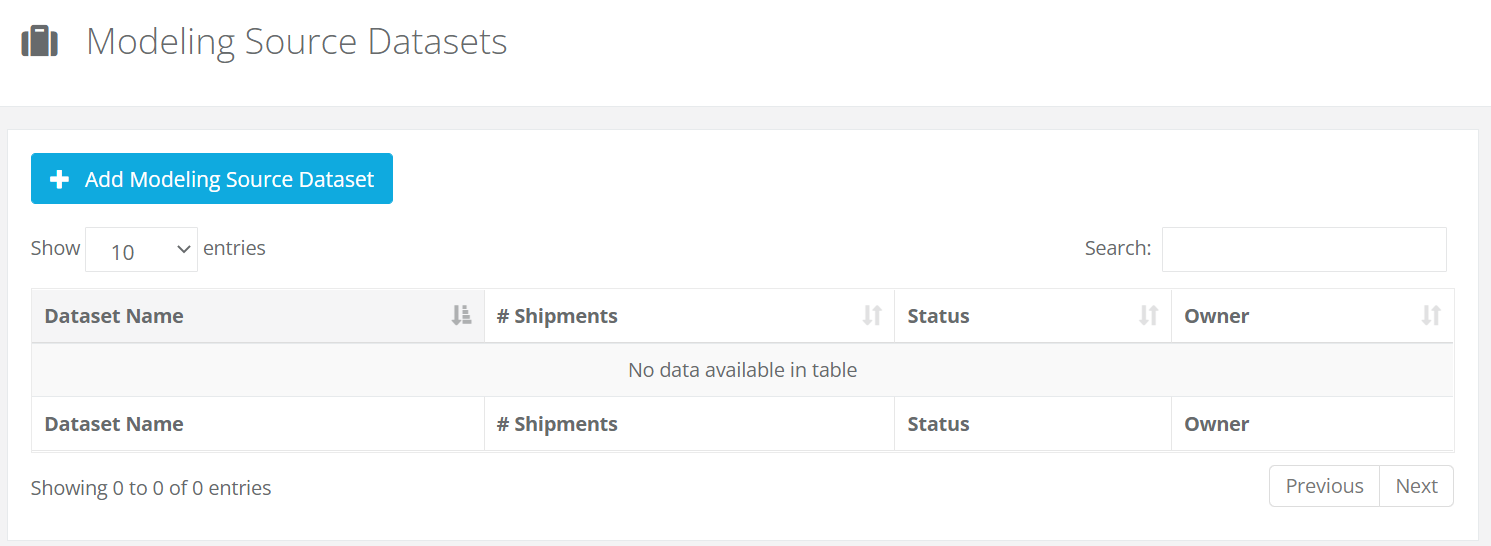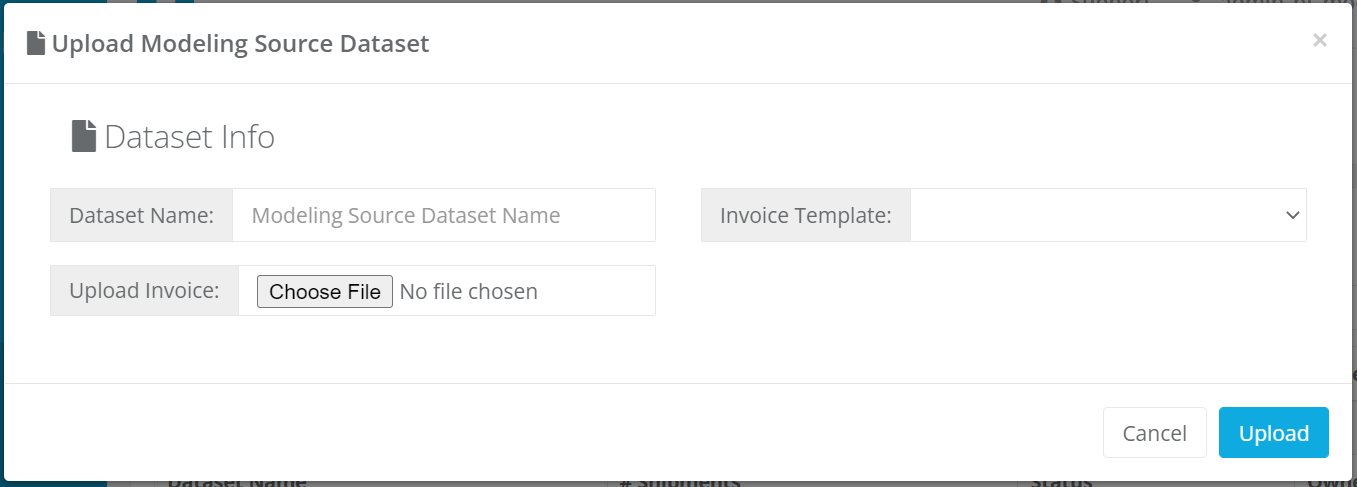The latest update to Enveyo shipping optimization software includes the release of two new features to Enveyo’s predictive analytics software, Modeling.
1. Modeling Source Datasets
This new feature offers Enveyo Modeling users more control through the ability to upload multiple datasets to be used for supply chain & logistics modeling.
Users can now upload carrier invoice data for use in comparative and predictive modeling by using the new Modeling Source Datasets page. This page allows users to select from a list of existing carrier invoice templates and select an invoice file to upload. This creates a Modeling Source Dataset in the system that the user can then select when generating a model by specifying which data should be modeled against.
Predictive analytics is a critical component for shippers in making business-transforming shipping decisions, including carrier contract negotiations and prospective client analysis for Third Party Logistics (3PL) providers. The new Modeling Source Datasets function increases control and reduces time spent manually analyzing carrier invoice data, speeding up the time from question asked to answer delivered.
2. Modeling Agreements
Organizations often experience a mad scramble when needing to locate carrier agreements with all the amendments made along the carrier contract negotiation journey. Having quick access to the most up-to-date carrier agreements is crucial when it comes to predictive shipping analytics and optimization.
Enveyo Modeling’s new Modeling Agreements page offers a central repository for all of your carrier agreements, eliminating headaches with the organizational hunt for your most recent agreement.
The Modeling Agreements feature also offers users the ability to create a carrier agreement library with access to all of your agreements in a consistent format. As parcel shipping volume increases and brands partner with more carriers to deliver an exceptional customer experience, the Modeling Agreements feature allows you to leverage varying carrier agreements in a standardized format, reducing errors, time, and headaches.








